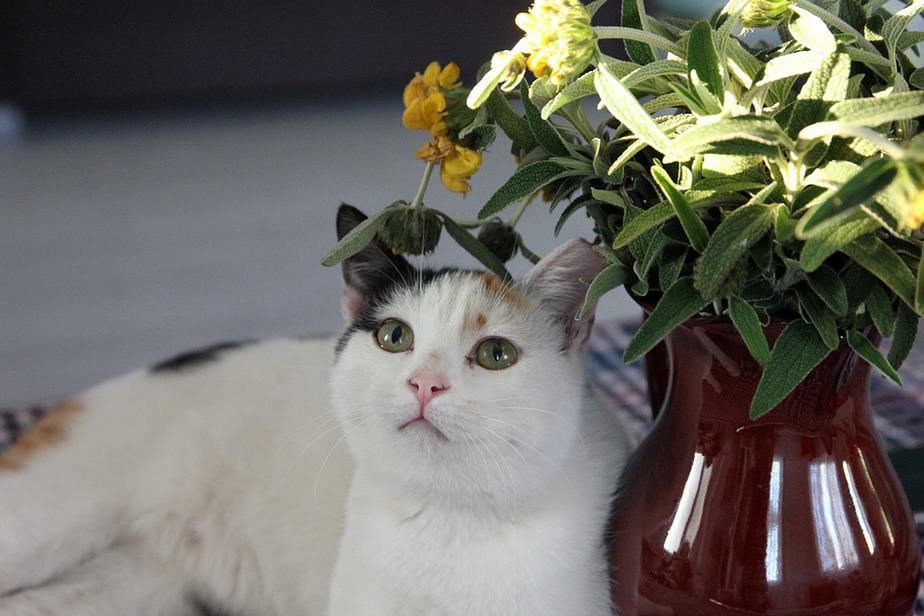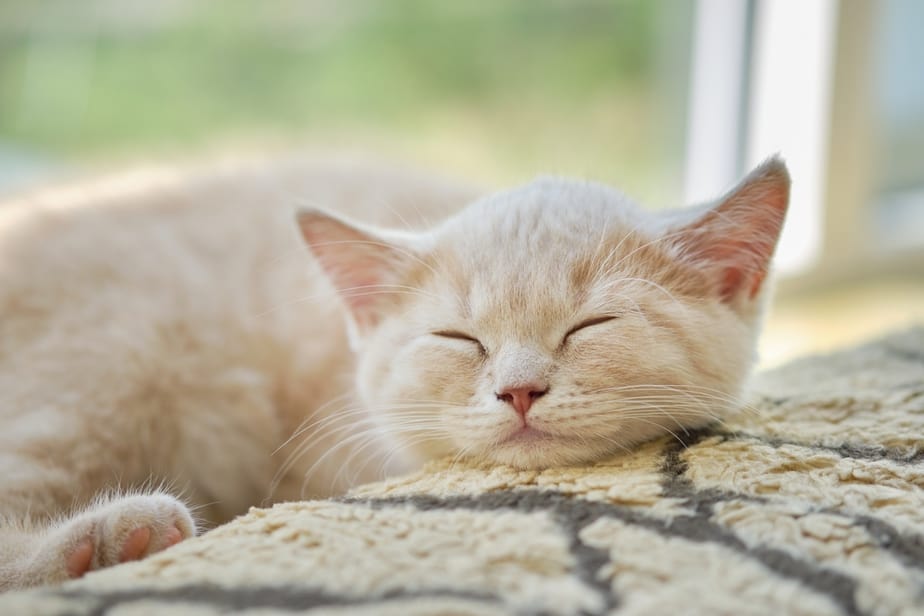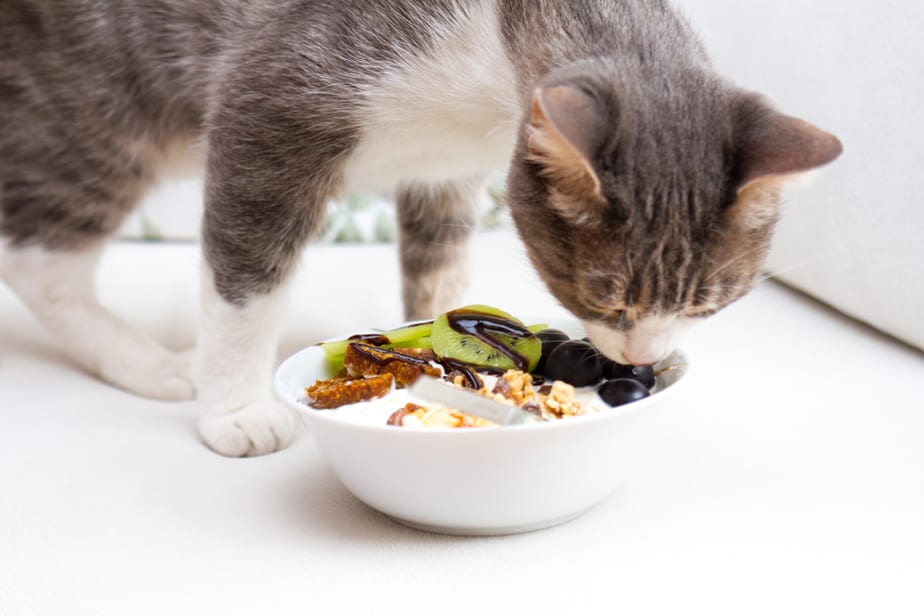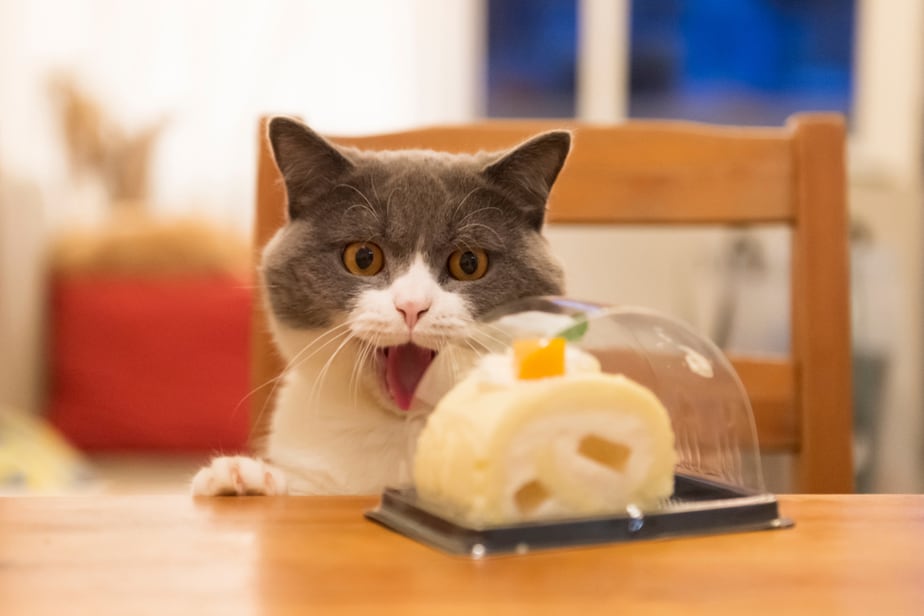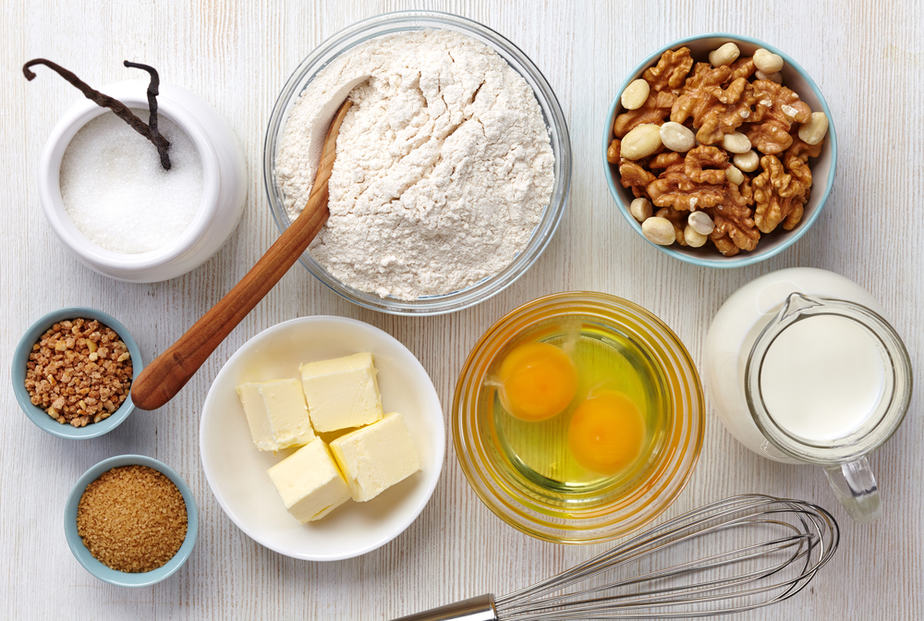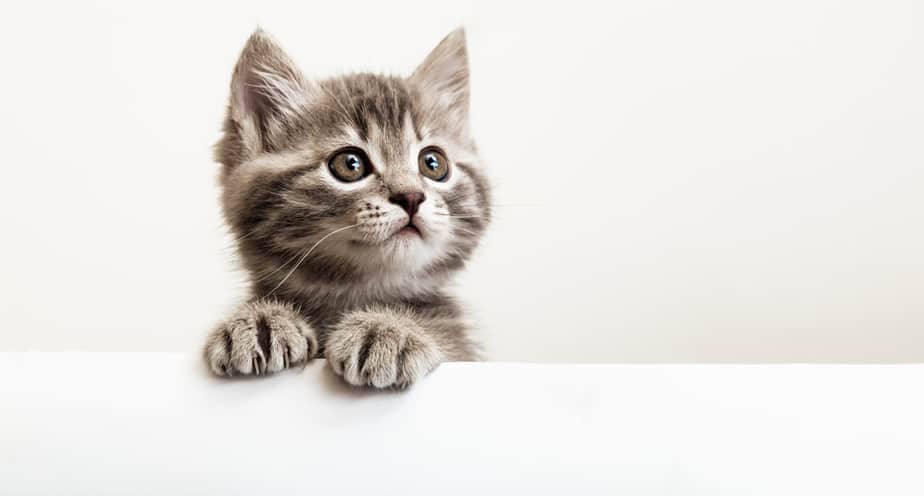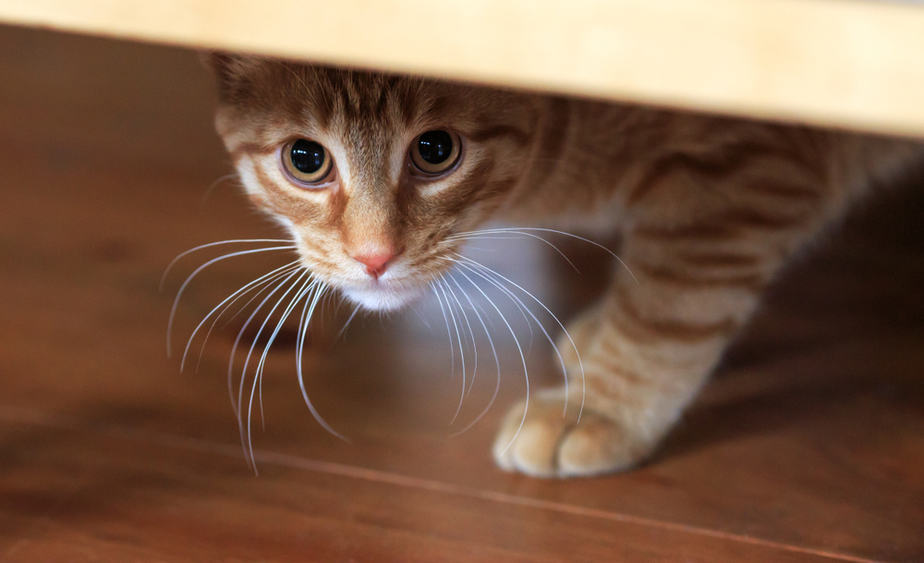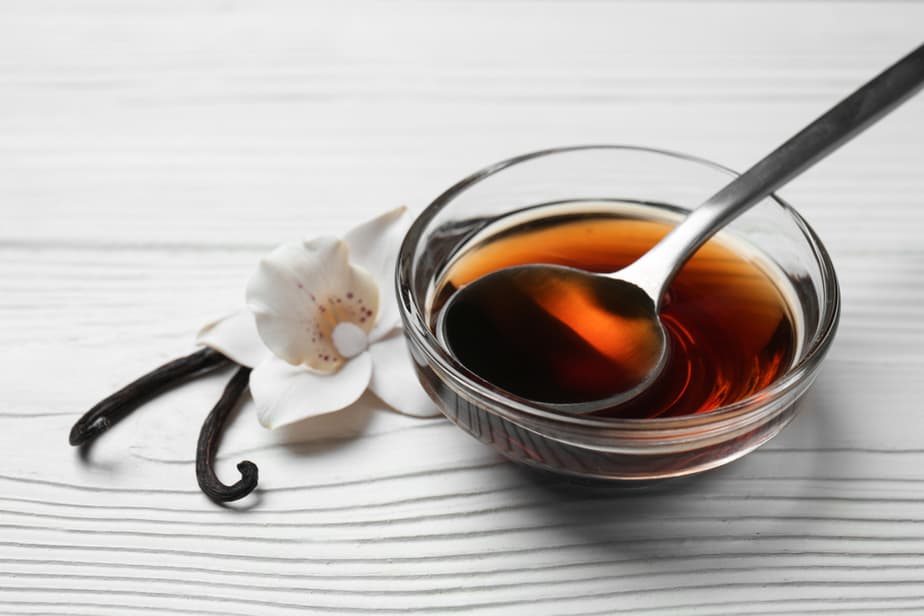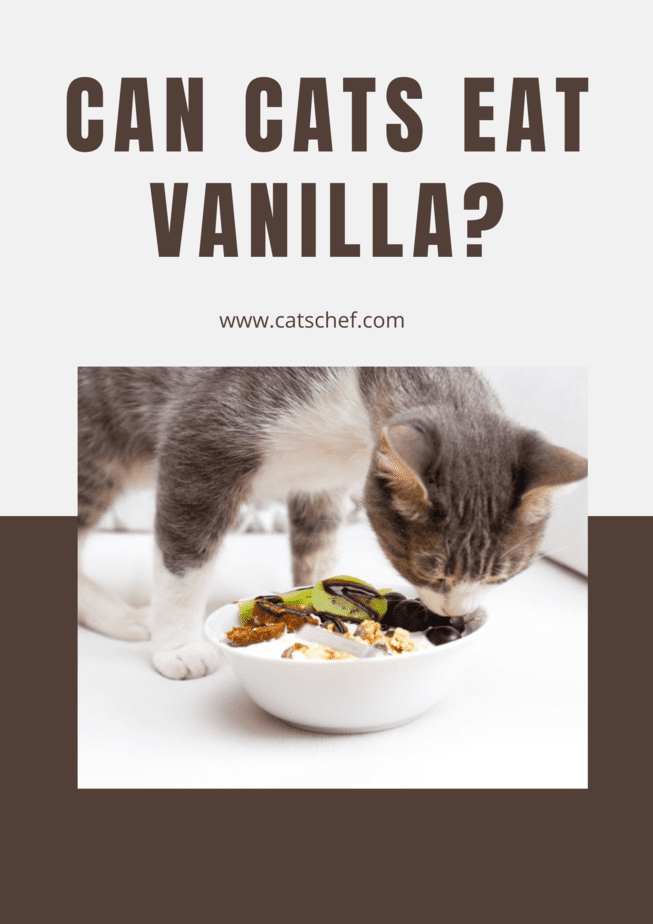📖 Table of Content:
If you can’t decide on a cake flavor for your birthday, but you want to please everyone, vanilla is always a good middle ground. If it’s your cat’s birthday, you’re probably wondering can cats eat vanilla before you order some treats for her.
Throwing a birthday party is never an easy job, especially when it comes to choosing cake as it’s the most important part, right? Thankfully, vanilla is one of the most popular flavors around the world, so it won’t be a problem if you decide to make a cake on your own.
However, baking something in the kitchen can’t go without your pet’s supervision. We all know how intrigued felines are when it comes to food, especially human foods. Beautiful different aromas such as vanilla send their whiskers dancing.
However, sharing some human food with your furkid can be a problem if she goes into a feeding frenzy. Just like people, if they like something, they will ask for it all the time and won’t be afraid to beg for it!
So, when introducing human foods into their diet, there’s always a possibility cats will like it a bit too much. On the contrary, it’s also probable your pet will give you a side-eye as her Highness can’t be pleased that easily.
Do cats like vanilla and is it safe?
It’s rather questionable if your cat will like the specific aroma vanilla has. Felines are individuals, just like humans, so their likings can’t be generally spoken about. Vanilla desserts are, however, another pair of shoes.
Your furkid will probably try to sneak a peek at what you’re having. They’re incredibly skilled at stealing food, so we understand your concern.
The good thing is that vanilla is safe in small doses which can be found in vanilla-flavored desserts. These include vanilla pudding, cakes, ice cream, and so on.
However, there are a lot of things to look out for. We’ll explain in-depth if cats can eat vanilla and vanilla-flavored desserts and how much of it they can have.
Can cats eat vanilla pudding?
It appears as a harmless snack, so we instantly assume that cats can eat vanilla pudding. After all, what could go wrong with a bit of pudding? However, there’s more than meets the eye.
This jiggly, flavorful treat is made up of a variety of substances that may (or may not be) harmless to our feline pals.
Milk, vanilla extract, butter, sugar, and cornstarch are the essential components of vanilla pudding. All of these ingredients have been known to make your cat feel ill. So, if you ever decide to serve vanilla pudding to your cat, think about what these components could do to her stomach.
A store-bought vanilla pudding is even more hazardous to cats. It usually contains artificial sweeteners, such as xylitol, that are poisonous to felines. Added sugars are another downside to these sweet pleasures.
What about vanilla ice cream?
While it’s not recommended, your pet probably won’t fall ill after a couple of licks of ice cream. However, this doesn’t mean you should encourage her to eat it regularly. Ice cream is bad for cats if consumed frequently.
Just like vanilla pudding, it contains ingredients that could upset your cat’s stomach. These mainly include milk, sweeteners, and vanilla extract. To avoid these possible problems, you can opt for a much safer version – catsicles.
That way, your pet will be pleased and safe while indulging in this treat. At the same time, you won’t be pulling your hair out thinking of all the possible trouble some ice cream could bring.
Can cats eat vanilla yogurt?
Yogurt is a dairy product, and cats have been known to develop lactose intolerance at an early and lose the enzymes required for lactose digestion. While a small amount of yogurt won’t hurt your cat, it should not be used as a substitute for her usual food in any manner.
Cats are carnivores and should be able to meet their dietary requirements as dictated by nature. While yogurt does include elements like calcium, which are important for bone health, it isn’t necessary for your pet’s diet because she already gets it from her meat-based meal.
While yogurt is normally harmless, your cat may as well have developed an allergy at some point in her life. She may be able to consume a few licks of this dairy product one day and then experience skin irritation and itching the next.
Although milk, cream, and other dairy products are considered popular treats for cats, it’s important not to overdo it with these, as most adult cats can’t digest them either.
Yogurt can be sometimes added to your cat’s diet. However, the yogurt you give your cat must be plain and unsweetened as cats can’t digest sugar.
Even though cats can eat small amounts of vanilla yogurt, some of them could contain vanilla extract. Whether natural or artificial, this extract is poisonous to felines and you should avoid it at any cost.
Be careful when it comes to this treat since it’s not as harmless as it seems.
What about vanilla cake?
There are no components in a simple cake that are particularly poisonous to your cat. But, before you jump to conclusions, does this imply that you should give your cat cake?
The short answer is no. You don’t have to be concerned if you accidentally find your cat eating cake out of curiosity. She’ll eventually realize that it’s not the right choice for her and move on.
However, cats who eat vanilla cake are still at risk of getting poisoned by vanilla extract. Besides, most cakes are also made with frosting which isn’t healthy for felines.
Ingredients such as sugar, butter, milk, and heavy cream are commonly used in cake icing, and for other types of pastries. Other components are utilized to enhance the flavor, color, or detail of the dish.
Vanilla essence, eggs, and even artificial sweeteners are used in some recipes. Except for eggs, none of these are safe for your pet to ingest, so even though cats can eat vanilla cake on occasion, they should really avoid it.
Common denominators of vanilla treats
All of the above-mentioned desserts have something in common. The ingredients used in making these sweet, tasty treats are a staple in many households.
Milk is one of the main products used in making desserts such as puddings, cakes, and so on.
This one could bring back some childhood memories for you. Milk is frequently shown as a cat’s preferred meal, but this is an entirely wrong picture. Felines are unable to digest milk and will often suffer negative repercussions if they consume a larger sip.
Lactose intolerance is a condition in which cats have difficulty digesting milk. Lactose can’t be broken down by cats because they lack the necessary enzymes. Lactase deficiency is what makes milk so difficult for them to digest.
If you wish to give your pet milk, choose lactose-free or almond milk. Any other milk, particularly cow’s milk, might cause bloating and gassiness in your cat. Other than that, various gastrointestinal problems such as vomiting and diarrhea may occur.
As for the butter, it’s made from milk and is also classified as dairy. When the cream has separated from the milk and been churned, voila – you get butter.
Although it is an important ingredient in vanilla puddings, it’s not very nutritious for cats. While the number of bad fats found in butter may not seem like much, it’s enough to induce stomach upset, dehydration, and vomiting in your cat.
The next stage is to season it with salt so that the majority of the butter is made up of milk fat and sodium. These are all harmful to cats in a variety of ways.
1. Dairy allergies
Although lactose intolerance and dairy allergy share certain symptoms, they are not the same. Lactose intolerance is caused by a lack of an enzyme in cats, whereas dairy allergy is caused by the body’s aberrant reaction to it.
Rashes, itchy skin, wheezing, and stomach difficulties are among the most prevalent symptoms, although they differ from cat to cat. Some symptoms, such as gastrointestinal difficulties, might be hard to discern between intolerance and an allergic reaction.
Another important distinction is that lactose intolerance occurs when kittens cease nursing, whereas allergies can be present at birth or develop later in life. In any event, try to figure out what’s wrong with your cat. A healthy pet means fewer visits to the veterinarian.
2. What about cornstarch?
Can cats eat vanilla-based desserts because of cornstarch?
Cornstarch affects cats differently from the other ingredients that can be found in different desserts which contain vanilla. And even though corn isn’t a common allergy trigger in cats, it still has an impact on them.
Many cat foods contain cornstarch, although not in the same quantities found in vanilla pudding for example. In addition, unlike vanilla pudding, cornstarch is usually baked rather than blended into those delicacies.
So, be careful when feeding your cat a treat that had cornstarch in it. Observe for any unusual reactions and reach out to your vet as soon as you notice something odd.
3. Dangerous sugar levels
Humans have strong sweet appetites and use sugar as a source of quick energy, but cats don’t. You would believe she likes the taste of a vanilla pudding or a vanilla muffin because of its sweet flavor, but this isn’t the case.
Your pet isn’t able to smell the sweetness. They don’t have the taste buds to detect and enjoy the flavor of sugar.
This ingredient is a carbohydrate, and cats don’t need it in their diet as it’s difficult for them to digest. The stomach of your little carnivore isn’t built to break down plant materials, but rather to process meat.
Also, it may harm their teeth and cause diabetes if ingested in excess, therefore, it should be avoided as much as possible.
4. Artificial sweeteners
The name is self-explanatory. Artificial means unnatural and, in the majority of circumstances, unhealthy. Artificial sweeteners are commonly utilized in desserts nowadays.
They are being used by businesses since they are less expensive than extracting natural juices. These can be harmful to cats since the substances used in them irritate their stomachs.
There are some dangerous sweeteners out there, which is unfortunate for cats. Some of the vanilla-flavored sweets can, for example, contain xylitol, which is particularly harmful to cats.
When xylitol interacts with your pet’s digestive system, it might cause various problems. It quickly enters your pet’s bloodstream and causes the pancreas to produce insulin. This results in hypoglycemia, or low blood sugar, which can lead to death if left untreated.
5. Salt content
Sodium is a mineral that both humans and our four-legged companions require for a healthy diet. It assists in muscle and nerve function as well as fluid balance. This ingredient may also be found in many meals, giving a distinct flavor.
A portion of healthy and balanced food provides plenty of this mineral for your cat, so any further quantities are unnecessary. If taken in large amounts or for an extended period of time, this component can be harmful to your pet’s health.
High blood pressure has been associated with sodium, which increases the risk of stroke and heart disease.
If your cat chef consumes salt on a daily basis, this is a major reason for concern. If she’s exposed to and has frequent access to this mineral, it may result in sodium poisoning.
Vomiting, diarrhea, extreme thirst and urination, as well as dehydration, are all symptoms that you may notice. In extreme situations, if your cat decides to eat salt (which is unusual), the poisoning might cause convulsions, tremors, and even coma.
Can cats eat vanilla extract?
Vanilla extract is a solution made by softening and filtering vanilla pods. It contains water and ethanol.
Ethyl alcohol is an organic chemical compound that has a rather pungent taste. Unfortunately, it’s highly poisonous to felines.
It’s produced by the fermentation of sugars and used in the synthesis of organic compounds. Ethanol poisoning can cause nausea, vomiting, as well as respiratory problems.
Some other, more severe symptoms may include seizures, hypothermia, and gastrointestinal issues. Therefore, vanilla extract gets a red light when it comes to entering your cat’s life.
Moreover, it can be a hard ingredient to dodge as it’s used in many desserts to add to the flavor. For the sake of your cat’s health and your sanity, you should avoid feeding vanilla-flavored foods to your pet altogether.
To sum up
As a cat owner, you must constantly wonder about the safety of your furkid. This isn’t an easy task, especially if you have a rambunctious furchild. If you’ve been asking yourself can cats eat vanilla, we hope we cleared it up for you!
A bit of some vanilla-flavored dessert isn’t likely to cause immediate harm but watch out for any unallowed portions.
We understand that our pets are interested and headstrong but keep them away from vanilla cakes and puddings for their own safety. These can contain potentially toxic substances that might cause major health problems in the short and long term.
These include vanilla extract that causes poisoning in felines. Leave out the vanilla yogurt as well, and instead, surprise your pet with some homemade cat treats.
They can even be store-bought, nutritious goodies to avoid a costly trip to the vet and instead enjoy the celebration of your pet!
